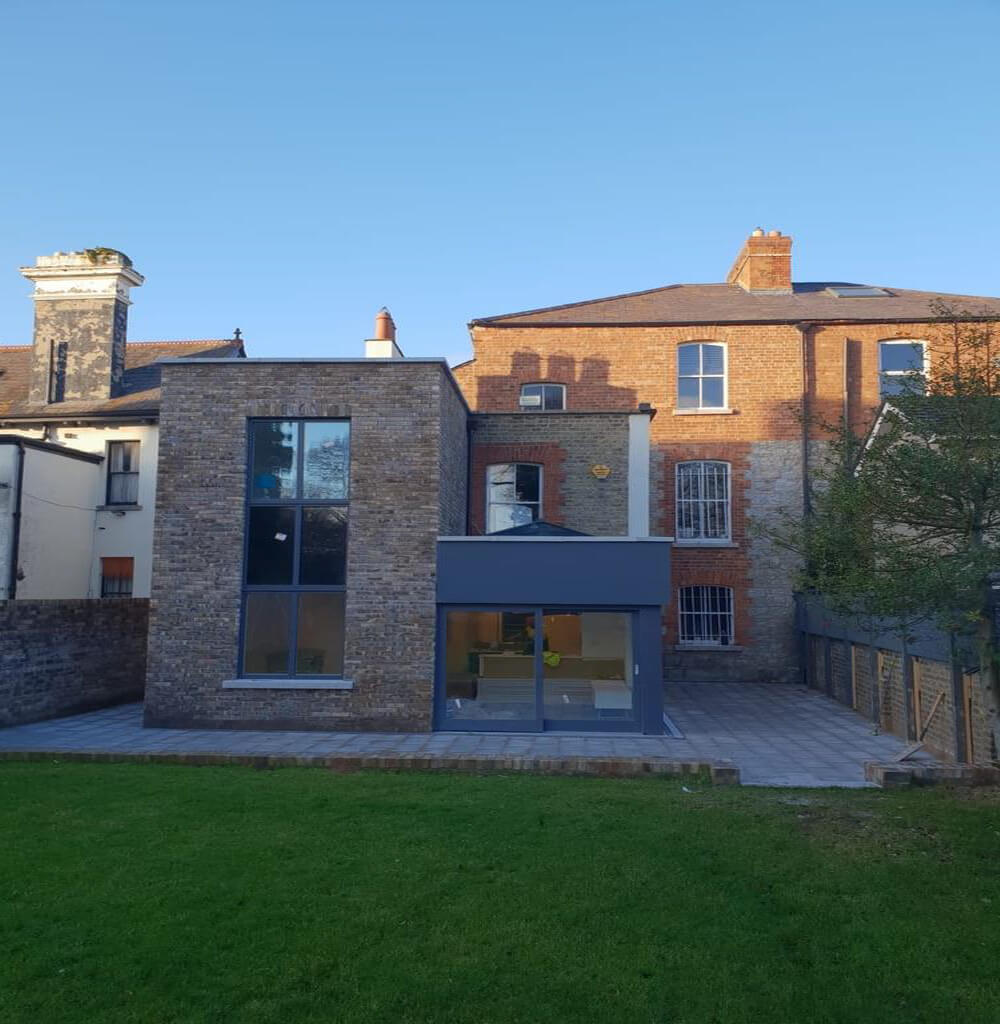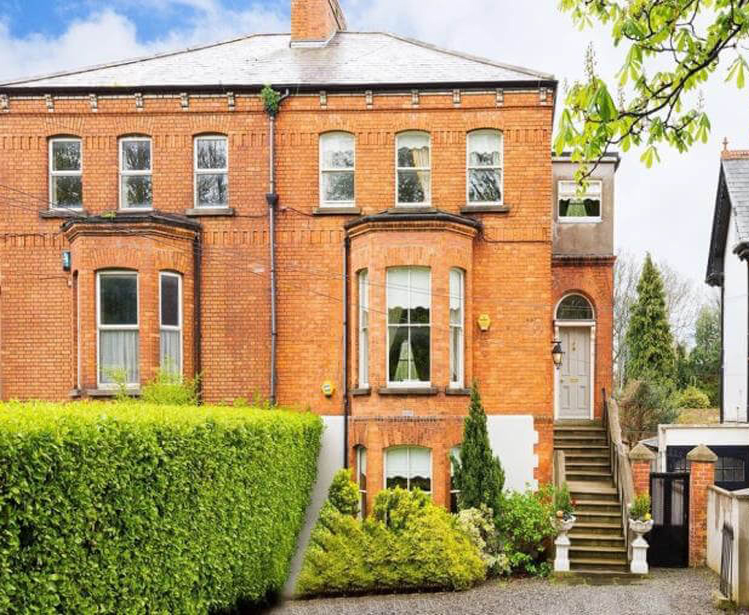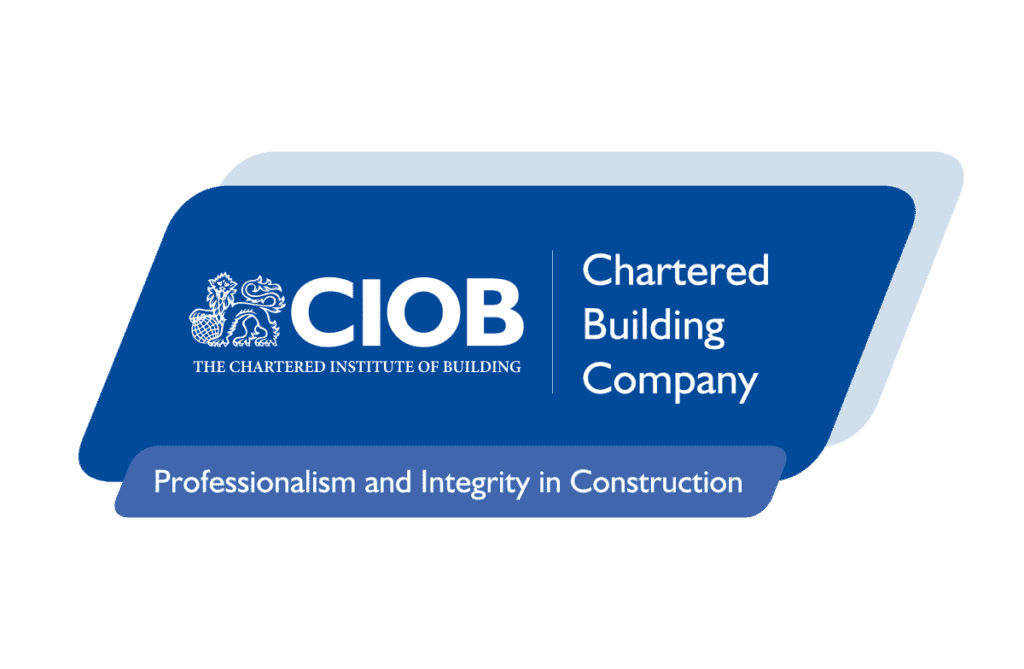Charleston Road is one of Ranelagh’s signature thoroughfares, winding a leafy way from Ranelagh village to Belgrave Square. The houses on either side of the road – and indeed in the greater Ranelagh and Rathmines areas of central Dublin – hail from different ages and were constructed in different architectural styles. Within this setting, Number 55 is one of the grander houses;
Edwardian, set well back from the road- a tall house with two stories and a basement. For this conservation project, Newform Maintenance and Services Ltd. were contracted directly by the client to carry out a series of external restorations as well as constructing a large, new extension at the rear of the house; in the latter of which the client wanted to retain the old brickwork of the original house.
Scaffolding:
Assuming ultimate responsibility on this conservation project, as MD I organised initially for a secure scaffold to be erected by an external certified scaffolder and tag for safe working-use throughout construction.
This was naturally essential to ensure the health and safety of the team but also to allow us to work safely around the site and reduce the risk of inflicting any unintentional damage to the old brickwork during construction. Once the scaffold was safely erected, I contracted Revamp Conservations Ltd. to undertake the cleaning and restoration of the front elevation brickwork.
Chemical wash front-facade and repoint brickwork
It was important to spruce up the old brickwork before beginning work on the back extension in order to blend the old brickwork with the eventual new brickwork as seamlessly as possible. Revamp began from the outset by covering up any assets of value such as the house’s old windows before starting to rake out any brickwork joints with a hammer and chisel and cleaning the resulting debris.
The team raked out any old lime-mortar out to a 20mm depth all along the front and back elevations, and therefore this stage took a considerable length of time and close, careful attention. Indeed, as Quality Control Manager on this project, one of my daily tasks was to ensure that this task was carried out carefully and safely, avoiding any undue damage to the original brickwork.
Throughout the project, all stages of work were overseen by the architect of the job, who from long before construction had carefully mapped out detailed plans for the extension and specific methods for conservation in line with the construction of the original house. As MD, I liaised regularly with the architect to ensure that we were both always on the same page as per each stage of the project.
Once this cleaning was finished, NHL 3.5 lime-mortar and Wash sand was used to repoint the brickwork of the front elevation, before a final power wash was applied and thereafter cleaned up.
Constructing the new extension
Once the house’s front-façade had been chemically cleaned, our next assignment was to deconstruct the existing sun-room and begin constructing the new extension according to the architect’s specifications in its place.
To achieve this, we began by taking down the old sun-room and gradually removing it from the site via skips. My team and I exercised great care in doing this in order to avoid damaging any surrounding brickwork. Furthermore, in order to faithfully co-ordinate this new extension with the rest of the house, as MD of the project I had to source old bricks to match the existing brickwork of the property.
This preparation took a considerable amount of time, as finding reclaimed bricks with a similar orange-yellow tint as the original house proved surprisingly difficult. Indeed, we ordered many ‘tester’ shipment of different reclaimed bricks to view them in-person alongside the original building; as indeed it was difficult to gauge their true appearance online. Eventually we found a virtually identical variant, and ordered shipments to be carefully set aside for later use.
At every step of this project, I received guidance from several of our specialist and conservation operative contacts on the best methods to construct this extension without endangering the heritage of the building.
Before constructing the new extension, it was also necessary to create a secure and sufficient foundation to support it at the back of the house. In this process we began by pouring 30N concrete (after having been given permission following an engineer inspection to the house’s groundworks), which we subsequently strengthened using Y 12 steel rebars.
One such insight I gained from these frequent consultations was that since this was a new extension, we were able to use traditional materials within the sub-floor.
Laying foundation and extension groundwork
Once the sub-floor had adequately cured and was inspected by our engineer contact, we were able to build the brickwork from the matching brick source. Adhering to the heritage requirements, strictly NHL 3.5 lime-mortar was used during the project.
Furthermore, although throughout the project we were committed to conserving and replicating the original condition of the house as far as was possible, another element of advice I gleaned from consultative meetings with specialists was to sparingly use some of Kingspan’s new, top-of-the-range insulation within various wall cavities in order to bring down the U values of the extension.
This allowed us to ensure that even whilst restoring and honouring the structural glory of the old building, we were also able to integrate the wonders of modern insulation for effective and sufficient home-heating. This incorporation was discussed with specialists as well as the client and the final verdict was in unanimous favour of its application.
As part of our continued preservation strategy, old granted sills and capping were ordered and installed within the extension to blend with those in the existing house; and in addition close attention was paid to the architect’s plans to ensure that the correct building methods were being employed to capture the restoration he had mapped out for us
Reclaimed bricks
Reflecting on what was perhaps our largest project, we managed to restore and expand this old Edwardian home both through our thorough chemical cleaning of the existing brickwork as well as the new yet old-fashioned extension we constructed at its rear.
Benefitting from considerable external advice and support, we successfully restored and expanded the house to the client’s wishes, only compromising where there was unanimous agreement between client, ourselves and external advisors and overseers in order to seamlessly integrate elements of contemporary building construction such as modern insulation. This old home has been restored and upgraded for many further generations.
The pictures and annotations below provide a break-down of the project; a reference for the architect of the project is also listed:
Completed elevation
The image below depicts the completed extension from behind, showing its relation with the original house as well as the paved enclosure allowing free passage from the side of the house to around the back extension and back into the original buildings





